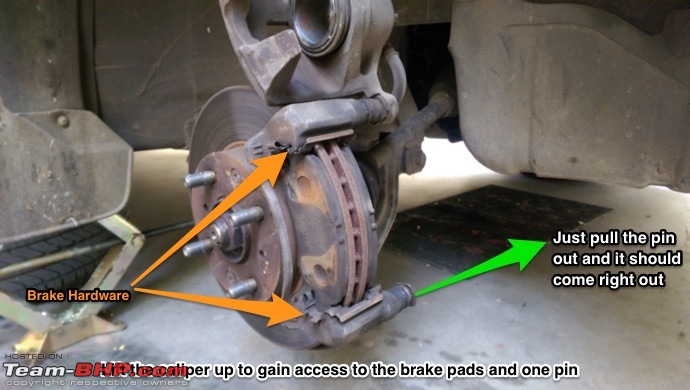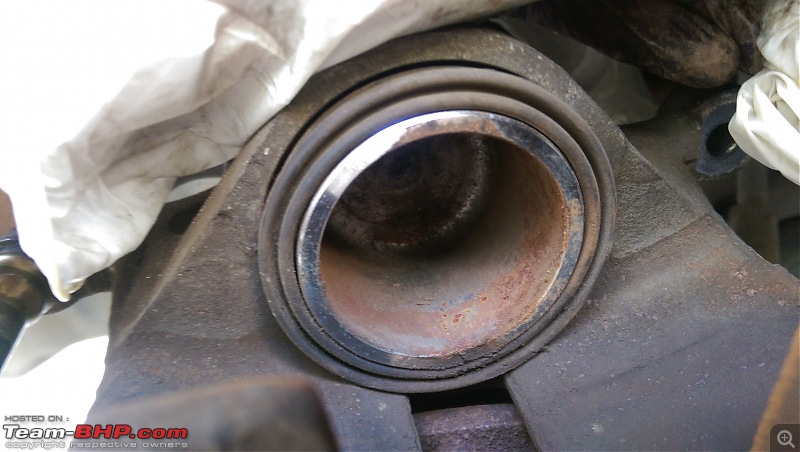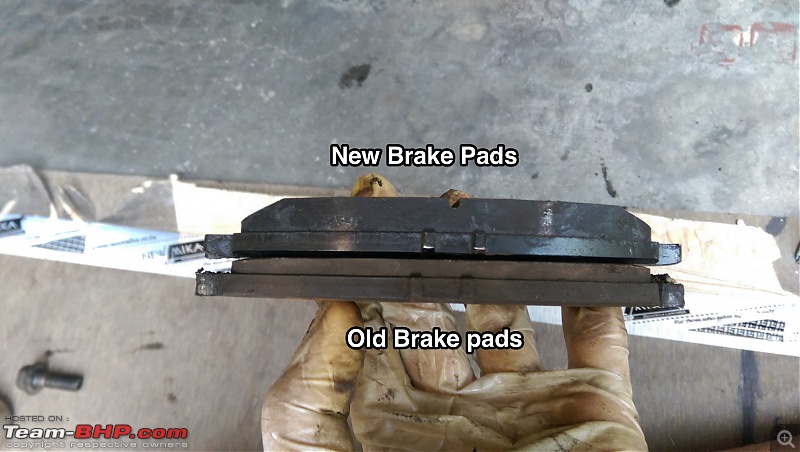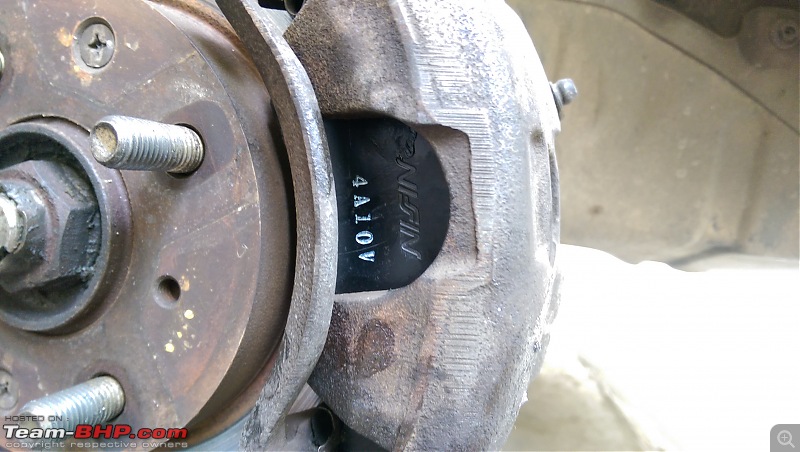One of the most used components in a car, especially in india, well, after the horn obviously, are the brakes. And the most commonplace where service centers make their money are replacing the brake pads. It’s not that big of a job and it can save you a load of time and money in the process. It’s a simple 30min job that can be done with common household tools and no specialty tools are required.
TOOLS REQUIRED
1. tire iron
2. A jack
3. Ratchet or spanner
4. 10mm attachment/10mm spanner
5. A C-Clamp
6. New Brake pads/ new caliper pins
7. Caliper grease/ Silicone grease
8. Waste cotton rags
9. Toothbrush/ wire brush
10. Something to blow the brake dust off
11. Gloves and a mask are recommended
Turn the steering towards the side that’s going to be worked on, to give you easy access to the bolts behind the brake caliper.
Loosen the lug nuts, jack the car up and remove the wheel.
Place the wheel under the car for added safety.
Loosen the bottom bolt of the caliper and lift the caliper upwards to gain access to the brake pads, remove the pads and clean all excessive brake dust and dirt from the caliper and surrounding regions. In order to get the piston back into the caliper, use the old brake pad as a support structure and with the help of the C-Clamp, push the piston back into the caliper. Remove the bottom Guide pin and its rubber boot and clean all the old grease and dirt using a cotton rag. Inspect for wear. Replace them if necessary. In my case, the caliper pins were badly worn and I have placed an order for the same, but they haven’t arrived yet. Don’t forget to take out all the brake hardware, clean them, apply a smidget of grease on them and fix them back so that the pads can move freely within the caliper assembly.
The whole point of a caliper guide pin is to allow free movement of the caliper to and from the brake disc. This is what allows the caliper and the pads to move to freely when you put your foot on and off the brake. Now, With a worn out, or say, a pin without any lubrication, what will happen is, that it will lead to uneven brake pad wear. For instance the inner pad would be all the way to the backing plate while the pads in the front would have enough meat left for another 10k, or the pads remain stuck to the rotor because the pin wont let the pads to release hence leading to faster brake wear and resulting in you having to splurge more of the green stuff on new pads, discs and fuel.
Most FNG guys don’t really care to use silicone or caliper grease. They just use the same cheap bucket of regular grease that they apply everywhere else. Now what happens when regular grease is applied to the pins is that the rubber boot will start to brittle out much faster, plus this regular grease is not resistant to the heat levels of caliper grease or silicone grease and will often just vanish leaving the pins without any lubrication. Silicone grease ensures that the rubber boot remains in good condition for extended periods of time and can tolerate heat much better. So even if it takes an extra effort to procure caliper grease, it’s worth it in the long run to go out of you way and purchase some.

Turn the steering to the side you are working on, jack up the car and remove the wheel. This will open up some more room to work a bit more comfortably.

Although I’ve removed only one bolt in the image ive attached below, I did remove the other bolt too, completely taking the caliper off from its mount. If you are to do this, support/ hang the caliper in such a way that the brake lines are not under tension. Doing this, I was able to get both pins out simultaneously


There is some amount of surface rusting in the caliper piston which seems normal. Just some sandpaper would work wonders, as this surface is not the surface that will affect the movement of the piston. I did have the caliper pistons replaced a couple of years back when there was some rust on the outer side which could hinder the movement of the caliper piston. The worst being your brakes being jammed on since the caliper piston cannot move back into the caliper.

The old pads that I replaced do look like they have some life left in them, and they do. The truth is that the pads had lost their initial bite point and somehow I felt that the car didn’t brake like the way it should. Prior to this, I did clean the pads with some sandpaper and emery sheet, but it didn’t help at all.

What a worn out caliper pin looks like this. (Mine are destroyed, but any black scarring is signs of wear and should be replaced)



I decided to get rid of the old pads since I wasn’t happy with them after cleaning them. So in went the new pads after all the brake hardware and caliper pins were cleaned and adequately lubricated. And all it takes for the piston to be pushed back in, is one of the old brake pads and a C clamp.

Brand new brake pads!


Do the same for the other side and you should be all set to munch more miles in true BHP fashion. If your car is equipped with rear disc brakes, then you might have to work twice as hard, not neglecting them in the process. Here’s till you wear out the next set of pads. Drive safe!

 (29)
Thanks
(29)
Thanks

 (3)
Thanks
(3)
Thanks
 (7)
Thanks
(7)
Thanks

 (6)
Thanks
(6)
Thanks

 (5)
Thanks
(5)
Thanks

 (1)
Thanks
(1)
Thanks



 (1)
Thanks
(1)
Thanks


















